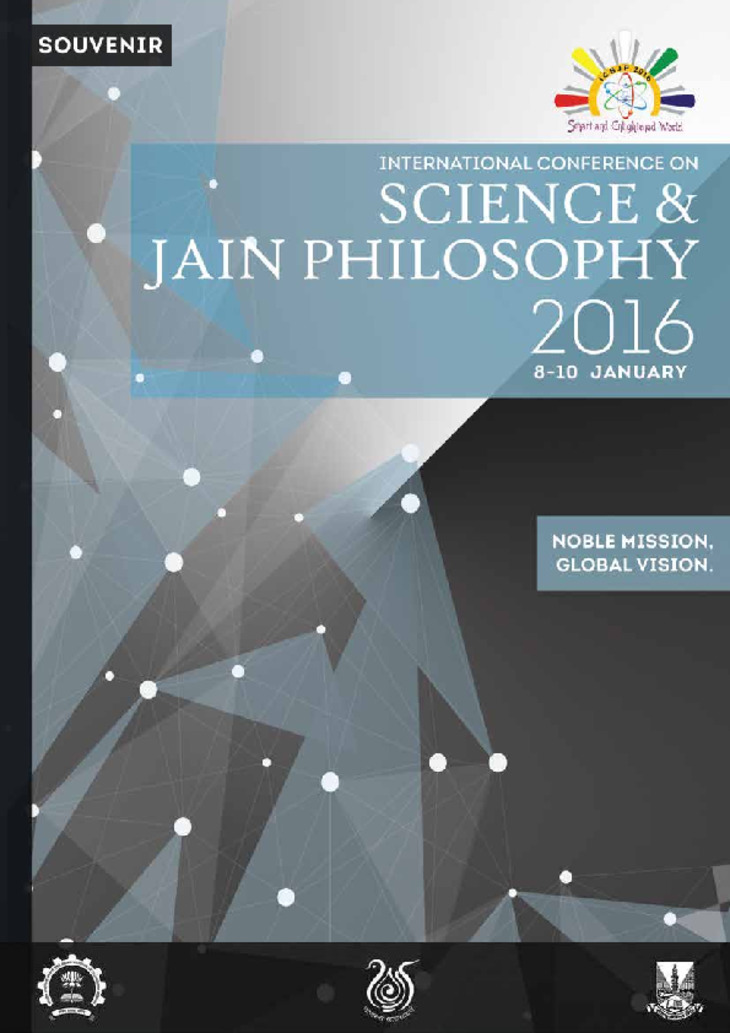
International Conference on Science and Jain Philosophy
 Dr. Hemali Sanghavi is the Head of Department of History at K.J. Somaiya College. She is the recipient of Bharat Jyoti Award for her contribution in the field of education.
Dr. Hemali Sanghavi is the Head of Department of History at K.J. Somaiya College. She is the recipient of Bharat Jyoti Award for her contribution in the field of education.
Hinduism, Jainism and Buddhism together constitute the cultural heritage of India. Jainism is both a system of philosophy and a way of life. It is one of India's most ancient Sraman religious traditions. The origins of Jainism lie far back in prehistory. Some of the relics discovered from Mohenjo-Daro and Harappa point out Jainism as a pre-Vedic religion. Rig-Veda refers to the hymns referring to the first Jain Tirthankara Rishabhdev. It is said that the traditional name for India, Bharat, has been derived from that of Risabhdev's son. The twenty-second Tirthankara Neminath was contemporary and cousin of Krishna. Parsvanath the twenty-third Tirthankara preached four vows in the eighth century B.C.
The period of twenty-fourth Tirthankara Mahavira (599-527 B.C.) is important in the history of India because it brought about significant changes in religious, social and economic spheres. Mahavira attracted a number of people, both men and women to be his disciples. He taught his followers to observe penances and live a life of restraint in all possible ways. Rich bankers, merchants, kings, queens and ministers became the followers of Mahavira. It is from 527B.C, the date of nirvana of Mahavira that Jains count the Vira nirvana era. It is the longest continuous era in Indian history. It starts 470 years before the Vikram era.
Jainism was dominant in Magadha during the reign of the Nandas (364-324 B.C.) and the Mauryas. Chandragupta Maurya the founder of Maurya dynasty (324-300 B.C.) at the end of his reign accepted Jainism. Later Samprati, the grandson of Asoka propagated Jainism in the country. It was after 500 B.C. that Jains via Mathura begun their migration towards the Western part of India, where they settled and where they have remained concentrated to the present day.
In course of time Jainism spread to different parts of India and received royal patronage. The period from the eighth to twelfth centuries was a golden time in the history of Jainism. It attracted a large number of followers. Jain scholars enriched the different languages by their works. Dynasties such as Kadamba, Ganga, Chalukya, Western Chalukya, Rashtrakutas, Hoyshalas and Kalchuris patronised Jainism in varying degrees. Jains have contributed to the development of art and architecture, sculpture and painting from very early times in the history of Indian art. Jainism made a striking progress under the rule of the Rajput rulers in Gwarat, Rajasthan and Madhya Pradesh from the eighth century onwards.
During the medieval period Jainism made contribution to the success of Vijayanagar empire. The Jain teachers impressed the Mughal teachers by their teachings. The merchants also contributed to the growth and development of Jainism by constructing religious places. Towards the end of the medieval period the Jain community lost royal patronage. There was persecution of the Jains in different parts of the country. So during this period the Jain community suffered rapid decline. Demographically the Jains witnessed decline during the modern period. The proportion of the Jains in the total population of India was 0.48 per cent in 1881. The increase in the Jain population has been noticeable following the decade of 1950's. There has been concentration of the Jain population in the urban areas in the modern times. Statistically the Jains are at present the best educated community in India.
Various schisms took place in Jainism from time to time. Consequently, Jainism has been divided into sects and sub-sects. What constitutes total renunciation, along with disagreement over the ability of women to attain liberation, were questions that divided the Jain community in the first century A.D into two major divisions viz. the Digambara and Svetambara. Digambara is a Jain sect whose ascetics practise nudity, while Svetambara counterparts, as the name suggests wear white clothes. These sects were further divided into sub-sects. Sthanakvasi, Murtipujaka and Terapanth have been important sub-sects of Svetambara division. The Murtipujakas put emphasis on the worship of idols. The Sthanakvasis don't follow the worship of idols, while Terapanth believe in thirteen religious principles. In spite of these and many other sectarian divisions, the adaptability of the Jains to the diverse circumstances and challenges has remained the strength of Jainism and made the survival of Jainism throughout the century-long history possible.
The ascetics have played prominent role in the history of Jainism.
- The Digambara Acharya Kundakunda is known for his exposition of transcendental standpoint.
- Umasvati's Sanskrit text 'Tattvartha Sutra' synthesizes the entire Jaina doctrine into mere 350 Sutras.
- Haribhadra who flourished in eighth century wrote as many as 1444 books. In order to debate with Buddhists, he even mastered Buddhist literature. He contributed immensely to the development of Jaina Yoga.
- Acharya Hemachandra also played important role in the propagation of Jainism. He has written on so many subjects that he could be called a grammarian, philosopher, thinker, religious leader and historian. Under the influence of Hemachandra King Kumarapala prohibited animal sacrifices, drinking and gambling in Gwarat. In fact, Gwarat witnessed nonviolent revolution during this period.
- Acharya Jindattasuri of Svetambara sub-sect Kharatara earned the title of 'Yuga Pradhana' for his social, religious and literary activities. As a tribute to his work, his followers have established dadawadis throughout India.
- The simplicity, austerity and the learning of the Svetambara monk Hirauijaya impressed the Mughal Emperor Akbar to such an extent that he prohibited the killing of animals on Jain festival days.
- In a similar way, Shrimada Rajchandra during the nineteenth century influenced Mahatma Gandhi and is considered to be the spiritual mentor of Gandhi.
- In recent times, Terapanth Acharya Tulsi received Indira Gandhi National Award for promoting well being through the minor vows (Anuvrata movement).
On the whole, though small in size, historically the Jain community has been in the forefront of making important contribution to the nation.
